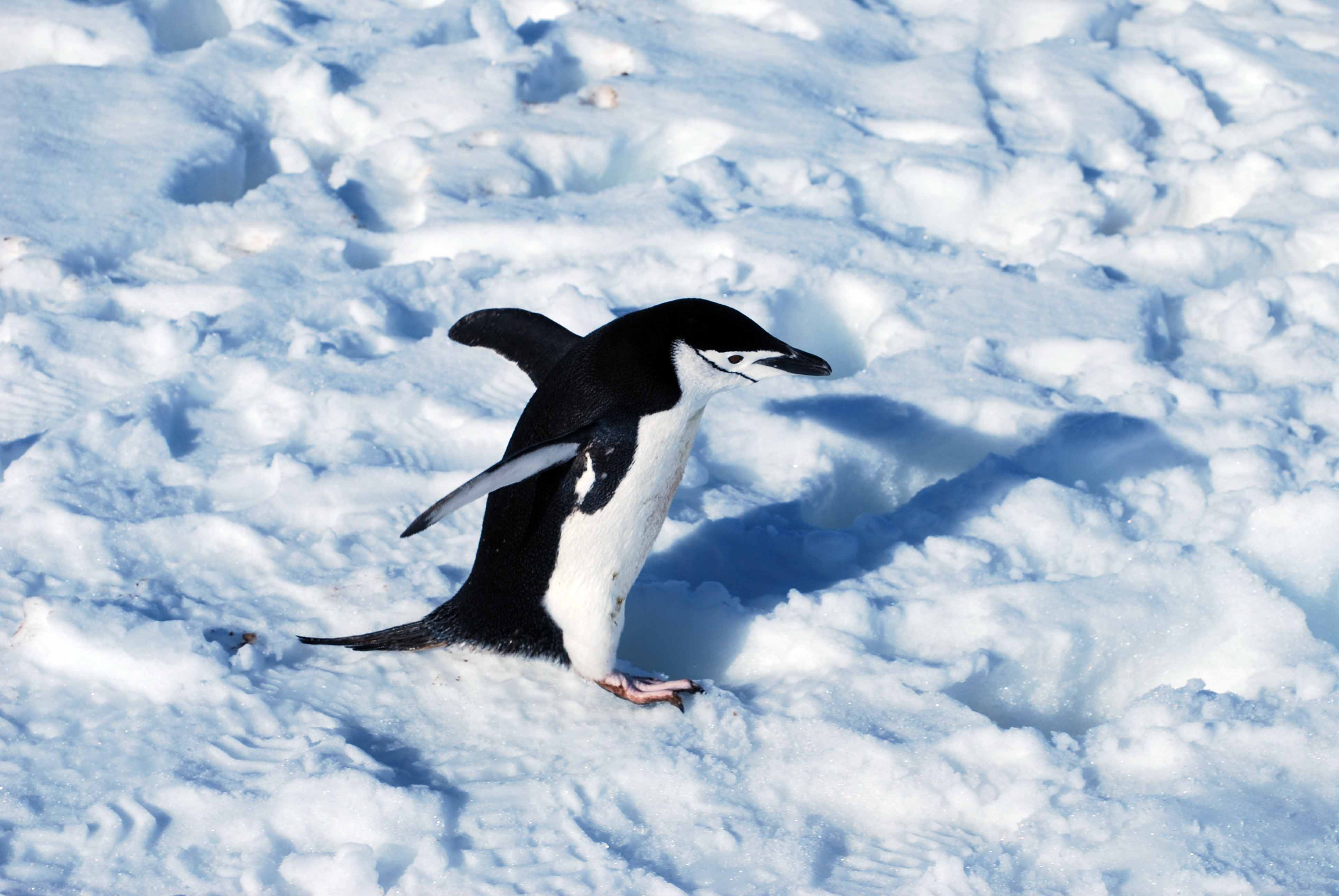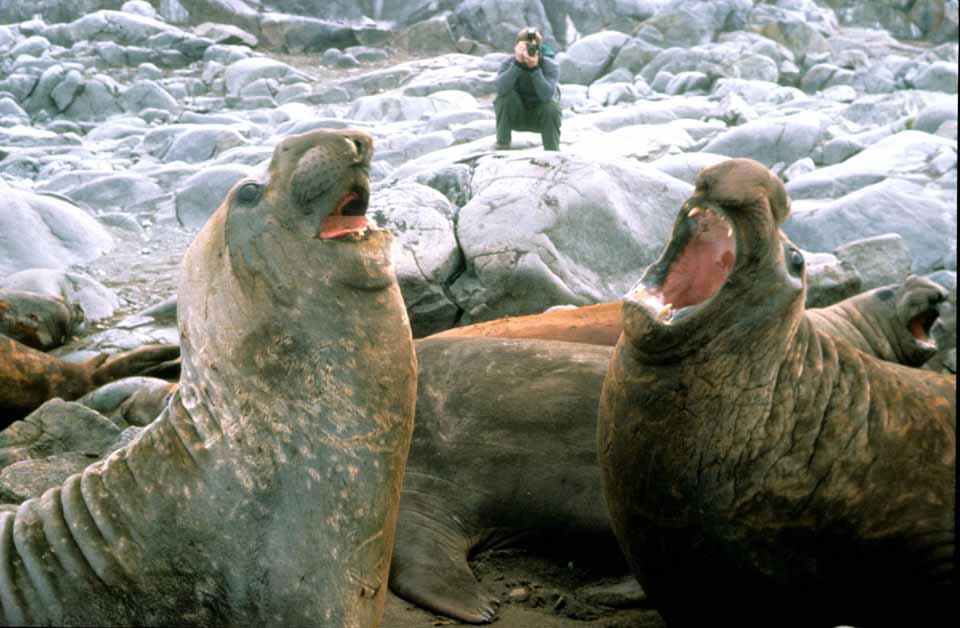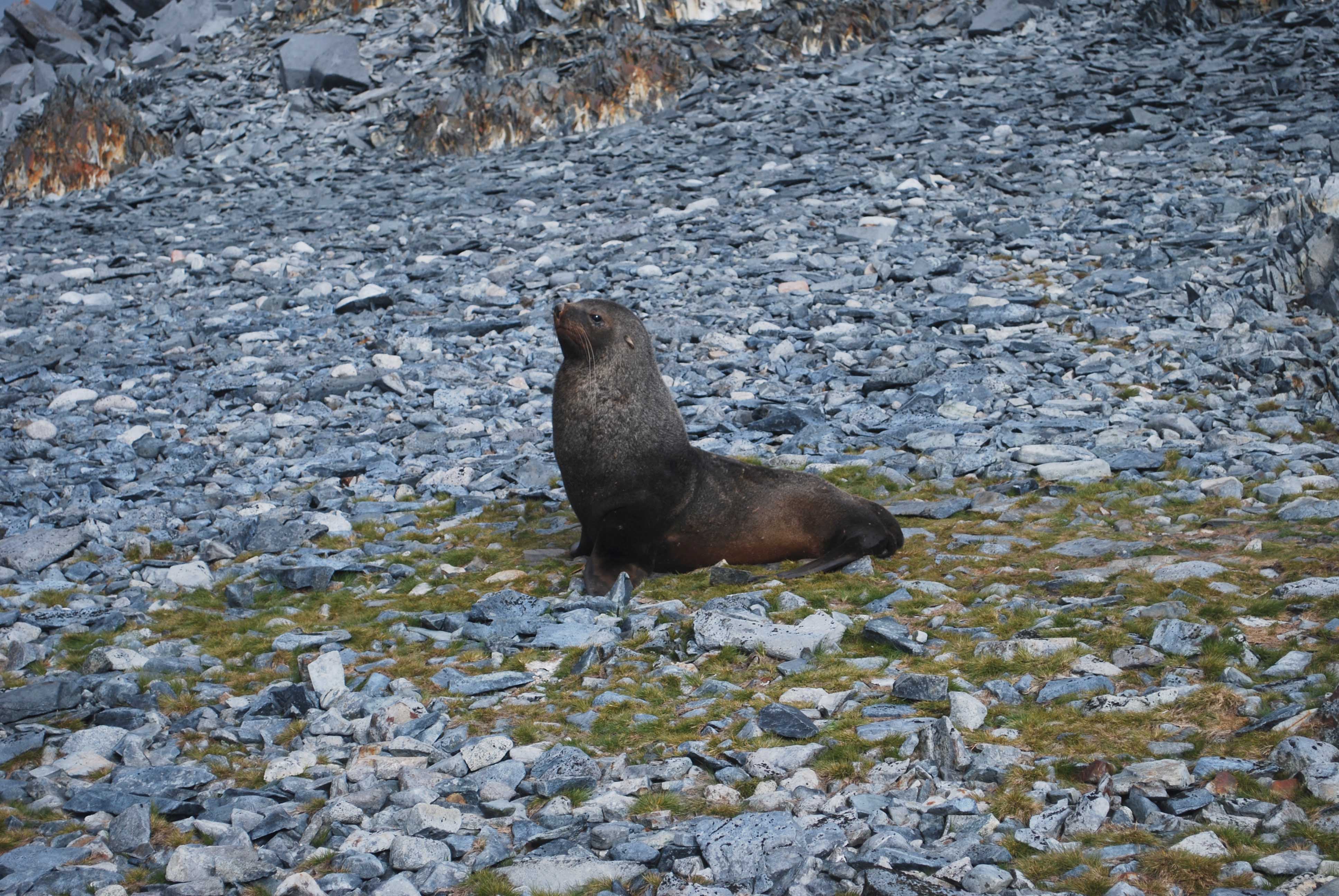
The Antarctic Peninsula is one of the most rapidly warming regions of our planet. We know this in large part because daily air temperatures have been measured over the past sixty years just a few miles down the coast from Palmer Station at Vernadsky Station (currently a Ukrainian station and previously a British station called Faraday). These measurements indicate that average mid-winter air temperatures have climbed a degree centigrade per decade. Translate this in to the more commonly expressed Fahrenheit and this is a remarkable ten degree increase over just sixty years! This pace of warming is of similar magnitude to that seen in some of the fastest warming regions of the Arctic.
As the western Antarctic Peninsula has rapidly warmed there have been notable "range extensions" among various penguins and marine mammals. Our knowledge of Palmer's local penguin populations has been greatly aided by Dr. Bill Fraser and his team of "birders" who have documented the seasonal abundances of penguins on several small islands in the Palmer region over the past thirty-five years. While numbers of Adélie penguins have dramatically declined coincident with climate change (sadly I recently learned from Bill that in this study site there are now only about 10% of the original 15,000 breeding pairs remaining), two other species of brushtail penguin, the chinstrap and the gentoo, have arrived. Both of these species originate from warmer subantarctic environs and have moved south and established new breeding colonies. Chinstrap penguins arrived in the Palmer region in 1976 and there are now some 300 or so breeding pairs. Gentoo penguins arrived more recently, in 1992, but are even more common.
Today, there are over 1000 gentoo breeding pairs. I took part in a study several years ago with Bill Fraser and others that reported gentoo penguins had established a new breeding colony at Brown Bluff on the northeastern tip of the Peninsula. The key location of this colony suggested that gentoo penguins are poised to extend their distributional range down the eastern side of the Peninsula, just as they have on the warmer western Peninsula.

Southern elephant seals have also "arrived" in the Palmer Station region. Despite the existence of a small namesake island in 1971 called Elephant Rocks that hosts a local breeding colony, elephant seals have figuratively been in the Palmer neighborhood for a blink of time. I suspect that Maggie, who has been visiting the station to conduct her research since the late 1970s, may remember when elephant seals were less common. Several years ago, I opened the front door of the BioLab and almost tripped over a large elephant seal at the base of the stairs, its pungent fish-like odor overpowering the icy air. Today, the guttural grunts and the sounds of flesh hitting flesh as males engage in battle echo off the retreating face of the nearby Marr Glacier. The Southern elephant seals breeding range may be designated "subantarctic" in field guides, but they have established a foot (or should I say flipper) hold near the station. Each summer, Elephant Rocks is strewn with pups and "weiners" (juvenile elephant seals) and attests to their successful colonization.

Of late, Antarctic fur seals (called "furries" by some of the locals) have similarly set up shop in the vicinity of Palmer Station. Also considered subantarctic, they are not as numerous as elephant seals, but they have established a presence and may yet establish breeding colonies in the region. It is pretty common to run into fur seals when visiting the small islands surrounding the station. On more than one occasion I have given an ornery bull male a wide berth when hiking on Amsler Island, a favorite haunt of fur seals.
So what is the upshot of these range extensions? In some cases the new arrivals seem relatively benign in terms of impacting the local ecology. However, others can pose problems. For example, fur seals have moved on to some of the local islands near Palmer Station that are strictly environmentally protected. Some scientists are concerned that the seals are killing sensitive mosses and lichens as they smother them by sprawling on the ground and scooting back and forth to the sea. Bill Fraser mentioned to me that on some local islands fur seals directly compete for space with nesting giant petrels.
Climate change is rapidly rewriting the book on the local penguin and seal fauna. I envision a not so distant future when the region surrounding Palmer Station, despite its true antarctic latitudinal address, will have become essentially subantarctic. The weather will be warmer and moister and the air more humid. There will no longer be any annual sea ice. Those species whose ecology is intimately tied to sea ice will be gone, most notably the Adélie penguin. Instead, gentoos, chinstraps, furries, and elephants, will rule the roost.